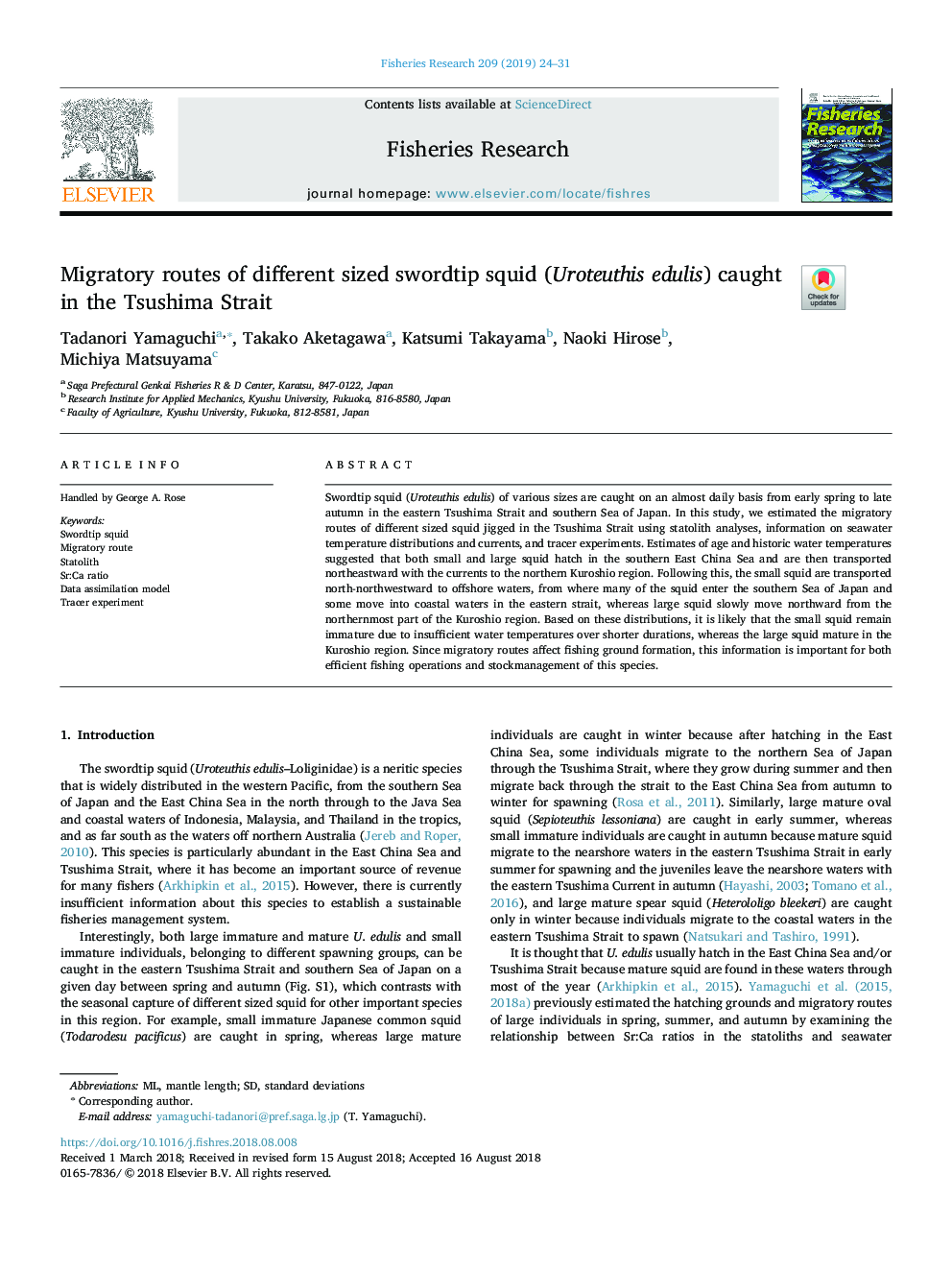| Article ID | Journal | Published Year | Pages | File Type |
|---|---|---|---|---|
| 10223854 | Fisheries Research | 2019 | 8 Pages |
Abstract
Swordtip squid (Uroteuthis edulis) of various sizes are caught on an almost daily basis from early spring to late autumn in the eastern Tsushima Strait and southern Sea of Japan. In this study, we estimated the migratory routes of different sized squid jigged in the Tsushima Strait using statolith analyses, information on seawater temperature distributions and currents, and tracer experiments. Estimates of age and historic water temperatures suggested that both small and large squid hatch in the southern East China Sea and are then transported northeastward with the currents to the northern Kuroshio region. Following this, the small squid are transported north-northwestward to offshore waters, from where many of the squid enter the southern Sea of Japan and some move into coastal waters in the eastern strait, whereas large squid slowly move northward from the northernmost part of the Kuroshio region. Based on these distributions, it is likely that the small squid remain immature due to insufficient water temperatures over shorter durations, whereas the large squid mature in the Kuroshio region. Since migratory routes affect fishing ground formation, this information is important for both efficient fishing operations and stockmanagement of this species.
Related Topics
Life Sciences
Agricultural and Biological Sciences
Aquatic Science
Authors
Tadanori Yamaguchi, Takako Aketagawa, Katsumi Takayama, Naoki Hirose, Michiya Matsuyama,
